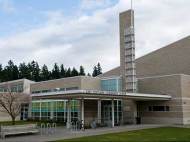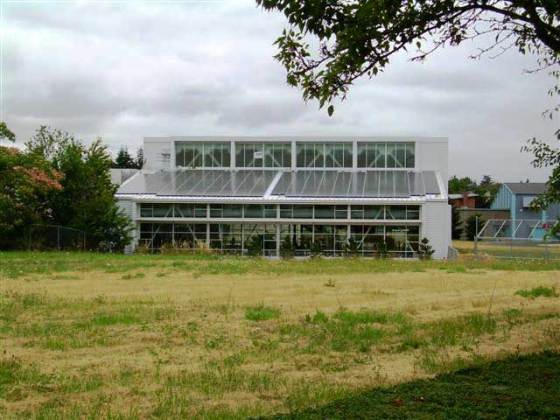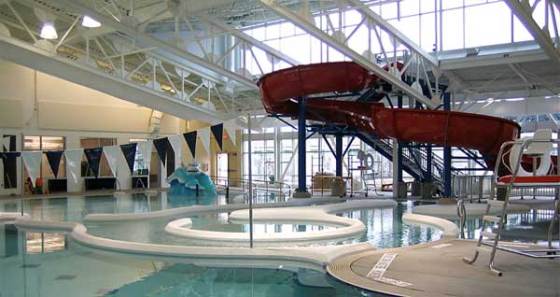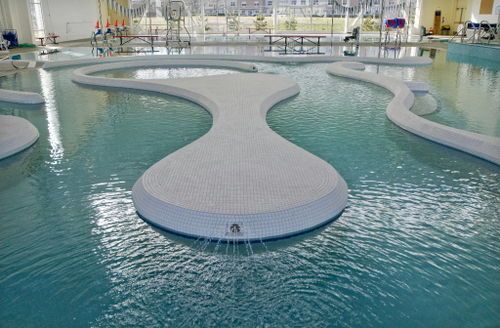Green architecture – East Portland Community Center Pool
 The recently completed aquatics facility at the East Portland Community Center is the first of its kind to achieve LEED Platinum. The LEED status is a true badge of honor, considering the reputation of aquatics centers which typically consume a lot of energy. The East Portland Community Center Aquatics addition, designed by SERA Architects, added 2,000 square meters to the existing community center to create a full service complex, providing a diversity of recreation needs.
The recently completed aquatics facility at the East Portland Community Center is the first of its kind to achieve LEED Platinum. The LEED status is a true badge of honor, considering the reputation of aquatics centers which typically consume a lot of energy. The East Portland Community Center Aquatics addition, designed by SERA Architects, added 2,000 square meters to the existing community center to create a full service complex, providing a diversity of recreation needs.
The building is aligned north/south, with solid walls on the east and west (where the sun would be most overwhelming). At the top of the natatorium, huge clerestory windows take full advantage of natural light. Artificial lights set on automatic sensors turn on, zone by zone, either when the sun begins to set, or when lack of motion indicates the pool is not in use.
The building’s sloped roof was designed “PV-ready” with special built-in fasteners to hold the 85kW photovoltaic panels, which were installed this spring as the final step for reaching platinum certification. It is predicted that these will provide 15 percent of the building’s total annual energy. Another six-panel solar thermal installation heats the water for the facility’s showers, while a separate heat-recapture system transfers waste heat off the mechanical system to heat the pool water.
Since water is a prominent feature of an aquatics center, it is fitting that water conservation is where this project achieves its greatest environmental success. Conservation strategies include low-flow plumbing fixtures, metered shower use, and an advanced pool filtration system that dramatically reduces the quantity of water used for pool filtration. These strategies are expected to save more than 3.5 million liters per year.
The use of variable frequency drives on all the pump motors reduced energy consumption straight off the bat, while a regenerative media filter reduces to a fraction the amount of water needed compared with a normal backwash filtration process. This technology also saved the design team from a tricky plumbing dilemma: “The sewer system wasn’t capable of handling the amount of water from a traditional backwash cycle, so we would have had to build an extra holding tank,” said Lisa Petterson, project manager at Portland’s SERA Architects. “This solved that problem — and extra money.”
Outside, the facility manages hundred percent of its rainwater on site, diverting it through bioswales and injection drywells that deliver the water back into the ground (as opposed to storm drains). Potable water savings of 30 percent are achieved with usage of low flow showers with metered controls, and low flow faucets.
Recycled materials were used in various parts of the building, including lockers, party rooms and bathrooms. Finally, whenever possible, the designers sought multiple uses, be it structural material that doubles as a finish or a roof deck made from material that also absorbs noise. During the construction process they recycled 95 percent of the construction waste debris.
Air quality also plays an important role in the LEED criteria, so efforts were made to keep chloramines to a minimum, including the addition of an ultraviolet filtration process for pool water, and a mechanical system that supplies air high in the building and exhausts low.
Although the architecture itself isn’t innovative or breathtaking, it represents an example of green solutions that could be implemented in many other aquatics centers around the world, thus saving a lot of needed resources and energy.












Leave your response!